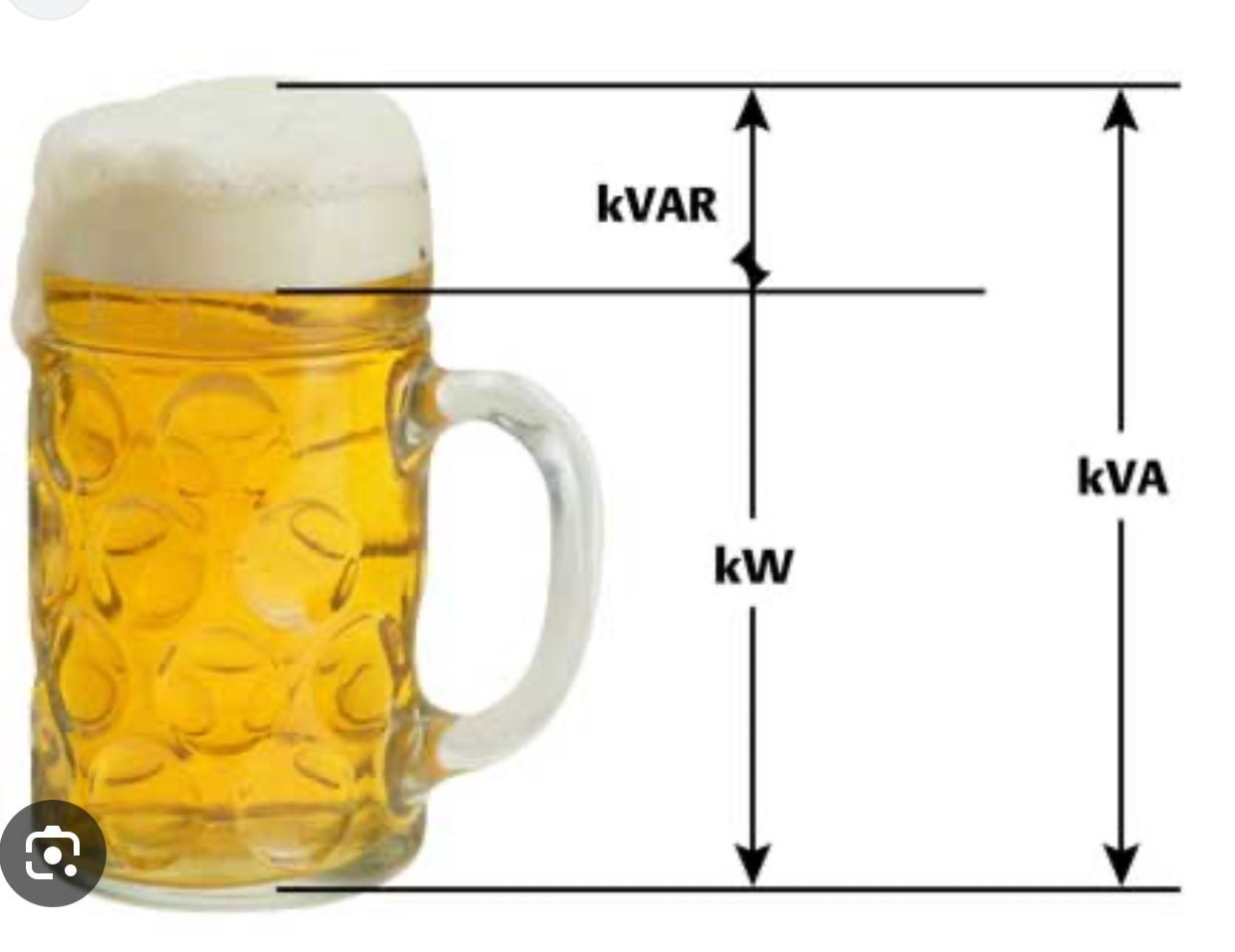
07368370992
What is KVAR and should I be worried about it?
You certainly should be worried about it if your company is on half hourly billing because if you produce it your company will be paying for it. Imagine a beer glass as an electrical circuit. The beer inside represents real power (kW), which is the useful energy that performs work. But there’s more to our beer glass than meets the eye.

Understanding kVAR (Reactive Power) with a Beer Glass
The Beer Glass
Imagine a beer glass as an electrical circuit. The beer inside represents real power (kW), which is the useful energy that performs work. But there’s more to our beer glass than meets the eye.
1. Real Power (kW) - The Beer Itself
The beer in the glass corresponds to the actual power consumed by electrical devices. It’s the energy that powers your light bulbs, appliances, and gadgets. When you take a sip of beer, you’re enjoying the real power – the refreshing taste of efficiency!
2. Reactive Power (kVAR) - The Foam on Top
Now, let’s talk about the foam on top of our beer. That frothy layer doesn’t contribute to the actual beer volume you drink, but it’s still there. Similarly, reactive power (kVAR) doesn’t perform useful work, yet it exists in electrical systems.
Reactive power arises from inductive or capacitive components (like motors, transformers, and fluorescent lights) that store and release energy cyclically.
Just as the foam doesn’t quench your thirst, reactive power doesn’t power your devices directly.
3. Power Factor (PF) - The Ratio
The power factor (PF) is the ratio of real power (kW) to apparent power (kVA). It tells us how efficiently we’re using electricity. Let’s relate this to our beer glass:
PF = Real Power (kW) / Apparent Power (kVA)
If the glass is filled with only beer (no foam), PF = 1 (perfectly efficient).
If there’s more foam (reactive power), PF decreases.
Why Does Reactive Power Matter?
Energy Efficiency: High reactive power means less efficient energy usage. It strains power lines, transformers, and generators.
Billing: Utilities charge for both real and reactive power. Minimizing reactive power reduces costs.
Voltage Stability: Excessive reactive power can cause voltage fluctuations.
How to Improve Power Factor?
Capacitors: Like adding sugar to beer to reduce foam, capacitors (kVAR sources) offset reactive power.
Power Factor Correction: Install capacitors strategically to improve PF.
Voltage Optimisation: Some models are designed to correct KVAR.